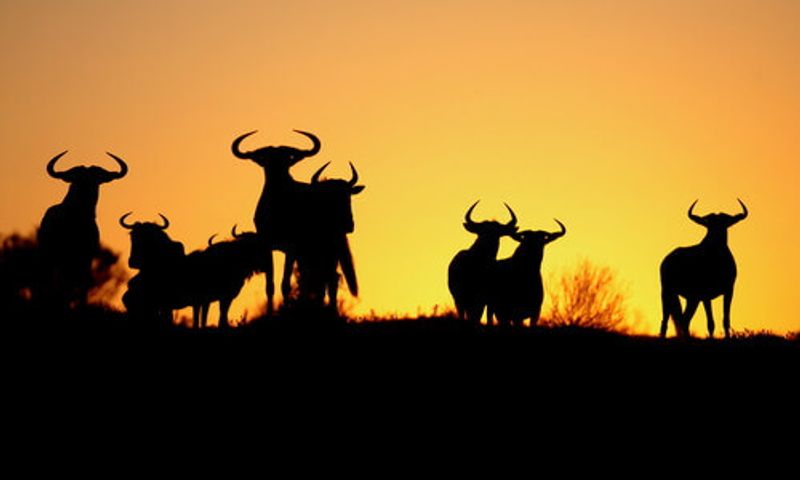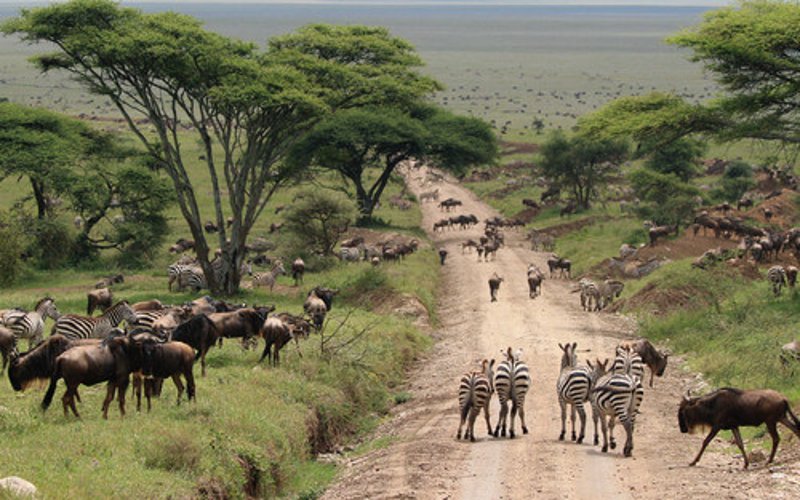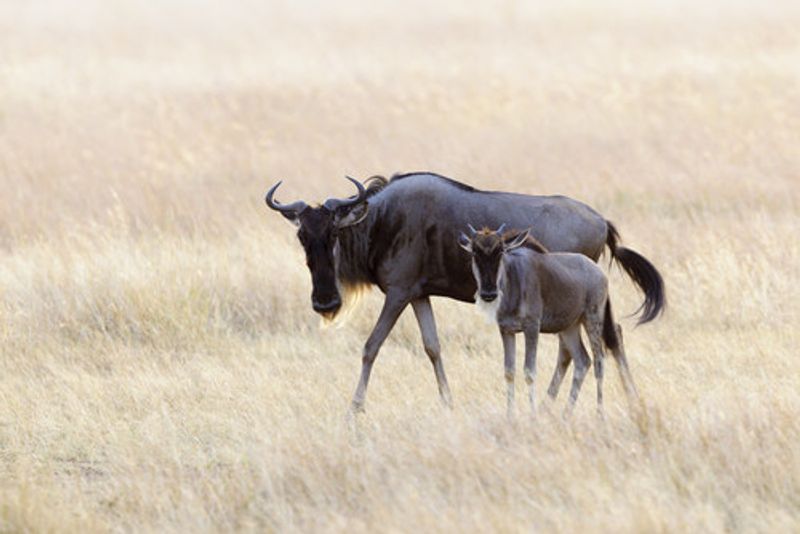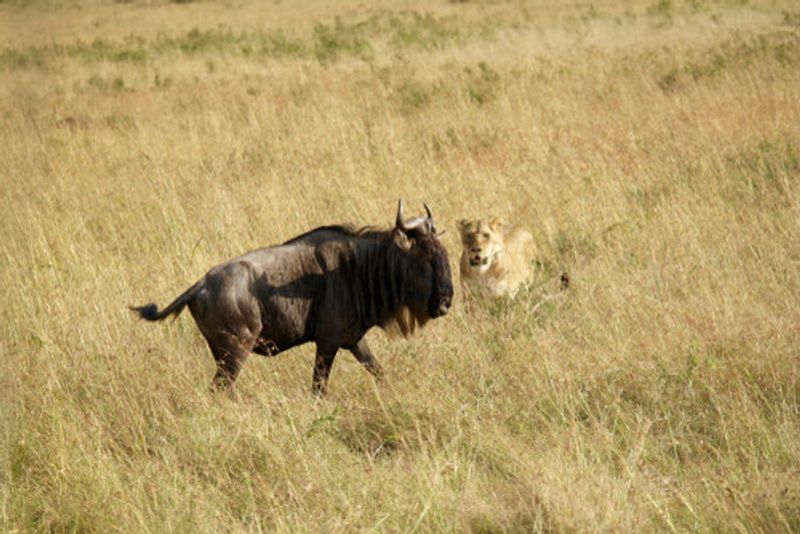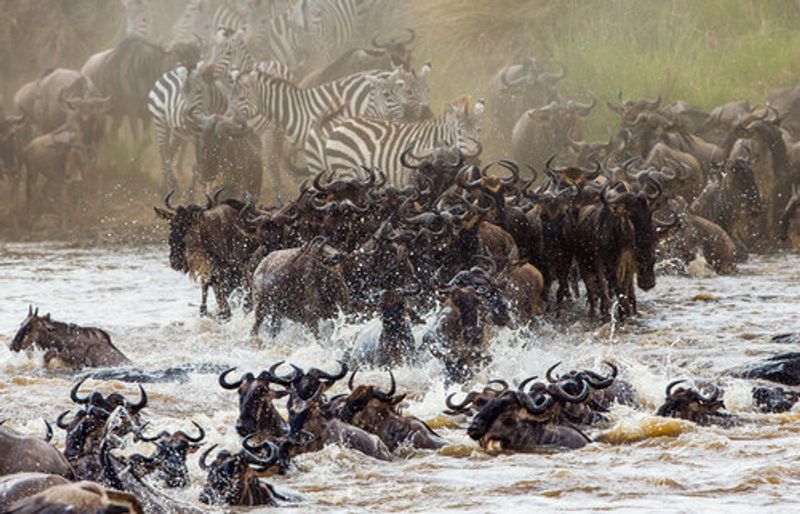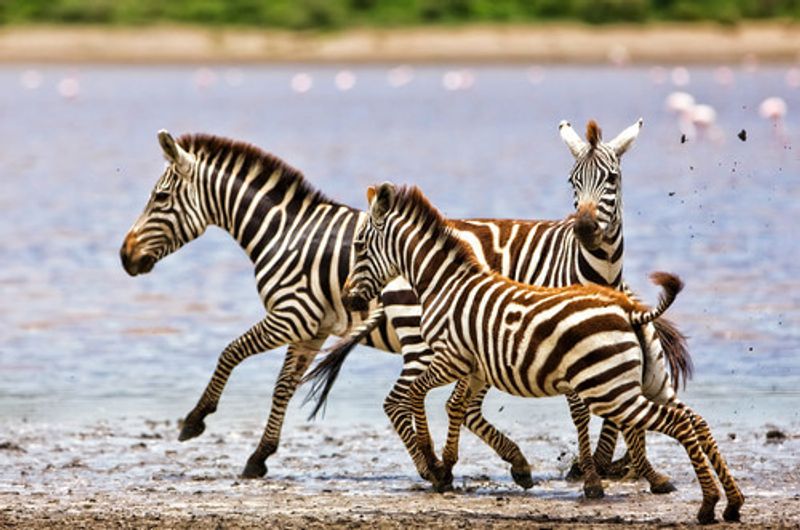One of the world’s most magnificent natural spectacles sees millions of animals cross East Africa in search of greener pastures
Every year, almost two million wildebeeste embark on a treacherous journey across one of Africa’s largest national parks, fueled by thirst and hunger. Hot on their tails are 300,000 zebra and thousands of antelope. Together, the animals head north from the southern plains of the Serengeti, up to Kenya’s Masai Mara Reserve, before looping back down again.
The great migration is the ultimate test of survival; animals must cover countless kilometres, pass predators and traverse dangerous terrain to reach their destination. For animal lovers and conservationists alike, the spectacle is truly magical.
First, let’s clear up some confusion.
Misconception 1 – All the animals migrate together en masse
While the migrating wildlife typically head in the same direction, they don’t always stick together. Groups are fragmented thanks to a number of factors, such as species and age, spreading out further and further as the migration progresses. When the lead groups reach the Mara River, animals at the tail end may still be hundreds, if not thousands of kilometres away.
Misconception 2 – It's a short event
Everyone has seen the quintessential migration footage, with thousands of animals storming across the mighty Mara River, but few realise that this is just a small portion of the journey. In reality, the great migration runs across the entire year. Animals typically calve from January to March, before heading north when the rains arrive. Towards the end of the year, they circle back to Kenya and the cycle begins again.
Misconception 3 – The route is set in stone
After years of research, experts know the typical course of the great migration, however it is far from fixed. Both the route and timing differ from year to year, largely depending on the weather and conditions. If dry season begins early in the Serengeti, so does the migration; animals move to follow the rainfall and go wherever the grass is greener.
The Great Migration Cycle
January – March
January to March is calving season, and the beginning of the migration cycle. During this window, thousands of wildebeest calves are born and herds happily graze on the southern plains of Tanzania’s Serengeti National Park. Animals slowly venture north when the rains arrive, so it’s a great time of year to see large herds and predators on the hunt. Temperatures between January and March are generally mild to warm.
April – June
Drizzle turns to showers in April, and the so-called ‘long rains’ fall consistently over the Serengeti. This heavier rainfall signals that it’s time for the wildebeest to pick up their pace, as the calves are older and more mobile. The animals continue, slowly but surely, up to the western corridor of the national park and into big-cat territory. Predators will be eagerly awaiting their arrival, so if you can stand the rain and lower temperatures, April is a great time to see the animal kingdom in action.
Herds edge closer to Lake Magadi in May and by June, wildebeest can cover up to 150km per day as they surge towards the Grumeti River. By the end of this period, the animals are usually more spread out; some reach the Kenyan border, while others may be much further behind. Again, this depends on weather and conditions.
July – September
In July, the main event begins: crossing the Mara River. This croc-infested body of water connecting the northern Serengeti to the Masai Mara Reserve is considered the climax of the great migration, and what many travel to see. Throngs of wildlife launch themselves into the perilous waters, in search of the elusive green pastures they’ve been chasing all year. Below the surface, hungry hippos and crocodiles await their next meal. But predators aren’t the only danger; many dodge their snapping jaws, only to drown in the chaos. The Mara River crossing is nature at its most raw and macabre – a thrilling game of roulette.
For the survivors, completing the river crossing marks the end of their northern journey. Wildebeest, zebra and antelope graze in the Greater Masai Mara area while the weather is dry. By the end of September, the final herds complete their crossing and it’s time to turn home.
October – December
October sees wildlife begin the trek back to the southern Serengeti – this time through the much less tumultuous Loliondo area. The weather is typically mild at this time of year, until the rains begin again in November and temperatures drop several degrees.
Although these months lack the frenzy of the previous ones, it’s still a fantastic time to see wildebeest in smaller familial groups, sans the crowds.
By late December, most of the migrating animals have returned to the banks of Lake Ndutu and the surrounding Serengeti. Within weeks, the cycle begins again.
